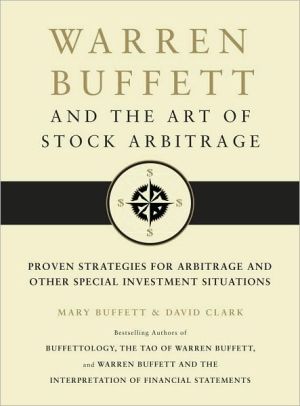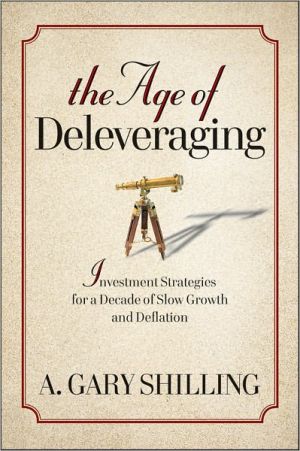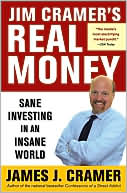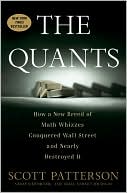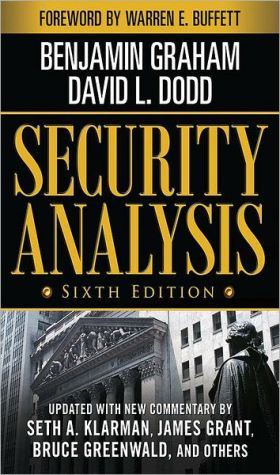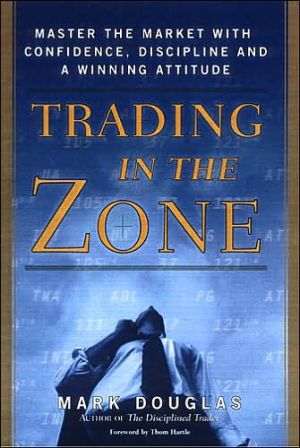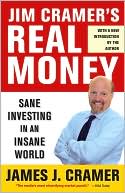Warren Buffett and the Art of Stock Arbitrage: Proven Strategies for Arbitrage and Other Special Investment Situations
Mary Buffett and David Clark help readers understand Warren Buffett's art of stock arbitrage.
Search in google:
Mary Buffett and David Clark help listeners understand Warren Buffett's art of stock arbitrage.
CHAPTER 1\ Overview of Warren’s Very Profitable World of Stock Arbitrage and Special Investment Situations\ The world of arbitrage and special situations is enormous. It can be found anywhere in the world where commodities, currencies, derivatives, stocks, and bonds are being bought and sold. It is the great equalizer of prices, the reason that gold trades at virtually the same price all over the world; and it is the reason that currency exchange rates stay uniform no matter where our plane lands. A class of investors called arbitrageurs, who make their living practicing the art of arbitrage, are responsible for this.\ The classic explanation and example of arbitrage is the London and Paris gold markets, which are both open at the same time during the day. On any given day, if you check the price of gold, you will find that it trades virtually at the same price in both markets, and the reason for this is the arbitrageurs. If gold is trading at $1,200 an ounce on the London market and suddenly spikes up to $1,205 on the Paris market, arbitrageurs will step into the market and buy gold in London for $1,200 an ounce and at the same time sell it in Paris for $1,205 an ounce, locking in as profit the $5 price spread. And arbitrageurs will keep buying and selling until they have either driven the price of gold up in London, or the price down in Paris, to the point that the price spread is gone between the two markets and gold is once again trading at the same price on both the London and Paris exchanges. The arbitrageurs will be pocketing the profits on the price spread between the two markets until the price spread finally disappears. This goes on all day long, every day that the markets are open, year after year, decade after decade, and probably will until the end of time.\ Up until the late 1990s the exchange of price information and buying and selling in the different markets was done by telephone, with arbitrageurs screaming orders over the phones at traders on the floors of the different exchanges. Today it is done with high-speed computers and very sophisticated software programs, which are owned and operated by many of the giant financial institutions of the world.\ STOCK ARBITRAGE\ A very similar phenomenon occurs in the world of stock arbitrage, only instead of arbitraging a price difference between two different markets, we are arbitraging the price difference between what a stock is trading at today versus what someone has offered to buy it from us for on a certain date in the future—usually anywhere from three months to a year out, but the time frame can be longer. The arbitrage opportunity arises when today’s market price is lower than the price at which someone’s offered to buy it, which lets us make a profit by buying at today’s market price and selling in the future at a higher price.\ As an example: Company A’s stock is trading at $8 a share; Company B comes along and offers to buy Company A for $14 a share in four months. In response to Company B’s offer, Company A’s stock goes to $12 a share. The simple arbitrage play here would be to buy Company A’s stock today at $12 a share and then sell it to Company B in four months for $14 a share, which would give us a $2-a-share profit.\ The difference between this and your normal everyday stock investment is that the $14 a share in four months is a solid offer, meaning unless something screws it up, you will be able to sell the stock you paid $12 a share for today for $14 a share in four months. It is this “certainty” of its going up $2 a share in four months that separates it from other investments.\ The offer to buy the stock at $14 a share is “certain” because it comes as a legal offer from another business seeking to buy the company. Once the offer is accepted by Company A, it becomes a binding contract between A and B with certain contingencies. The reason that the stock doesn’t immediately jump from $8 a share to $14 a share is that there is a risk that the deal might fall apart. In which case we won’t be able to sell our stock for $14 a share and A’s share price will probably drop back into the neighborhood of $8 a share.\ This kind of arbitrage might be thought of as “time arbitrage” in that we are arbitraging two different prices for the company’s shares that occur between two points in time, on two very specific dates. This is different from “market” arbitrage where we are arbitraging a price difference between two different markets, usually within minutes of the price discrepancy showing up.\ It is this “time” element and the great many variables that come with it that make this kind of arbitrage very difficult to model for computer trading. Instead, it favors hedge fund managers and individual investors like Warren, who are capable of weighing and processing a dozen or more variables, some repetitive, some unique, that can pop up over the period of time the position is held. It is this constant need to monitor the position and interpret the economic environment that brings this kind of arbitrage more within the realm of art than science.\ © 2010 Mary Buffett
\ Publishers WeeklyBuffett, once a member of Warren's immediate family, and Clark, a writer with a background in finance and law (Warren Buffett's Management Secrets), tackle Mr. Buffet and stock arbitrage this time out. Warren Buffett is known for his ability to pick undervalued stocks and turn around beaten-down companies. He is less well known for his use of stock arbitrage, and the authors advance the argument that this method, though not particularly flashy, has been an excellent money maker for him. They take the reader through the different types of arbitrage—friendly mergers, hostile takeovers, self-tender offers, liquidations, spin-offs, stubs and reorganizations. In many of these, the stakes seem large and the profit seems small, but they yield a high percentage return. Mr. Buffett is rarely quoted directly in this short volume, but the authors provide numerous examples in how to implement his strategies. Even with his techniques explained however, not all will be enjoy Mr. Buffet's results. (Nov.)\ \ \ \ \ Library JournalThe latest exploration of Warren Buffet's financial prowess from his former daughter-in-law Buffett and Clark, authors of six previous books on his investment strategies, takes the reader into the world of arbitrage and special situation investing. Arbitrage, the practice of taking advantage of a price difference between two markets by buying in one market and selling in another, has been one of Buffett's strongest financial operations, but almost nothing has been written about his methodology. Aimed at the casual investor, the book explains how anyone can use these strategies in his or her own portfolio. The writing is concise and straightforward, the examples are current and clear, and there are simple formulas on how to determine risk in both arbitrage and valuing liquidations. They also simplify the complicated situations of mergers, acquisitions, hostile takeovers, securities buybacks, and corporate liquidations to give readers an idea of how to find and understand their investment potential. VERDICT This book will appeal to investors looking for an introduction to arbitrage and special situations. The authors successfully outline this complicated world and explain how Buffett has harnessed these events for profit. Recommended.—John Rodzvilla, Emerson Coll., Boston\ \ \ From the Publisher"This book will appeal to investors looking for an introduction to arbitrage and special situations. The authors successfully outline this complicated world and explain how Buffett has harnessed these events for profit." —-Library Journal Starred Review\ \
